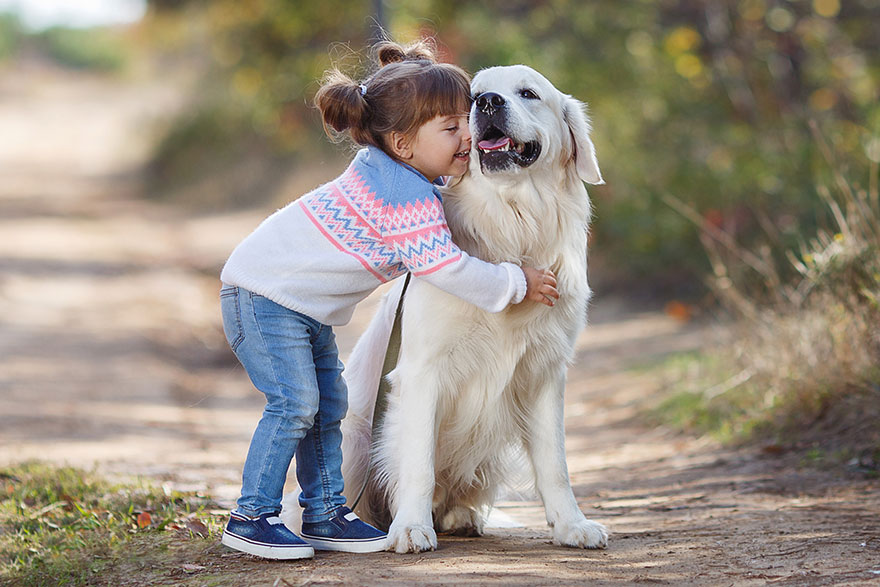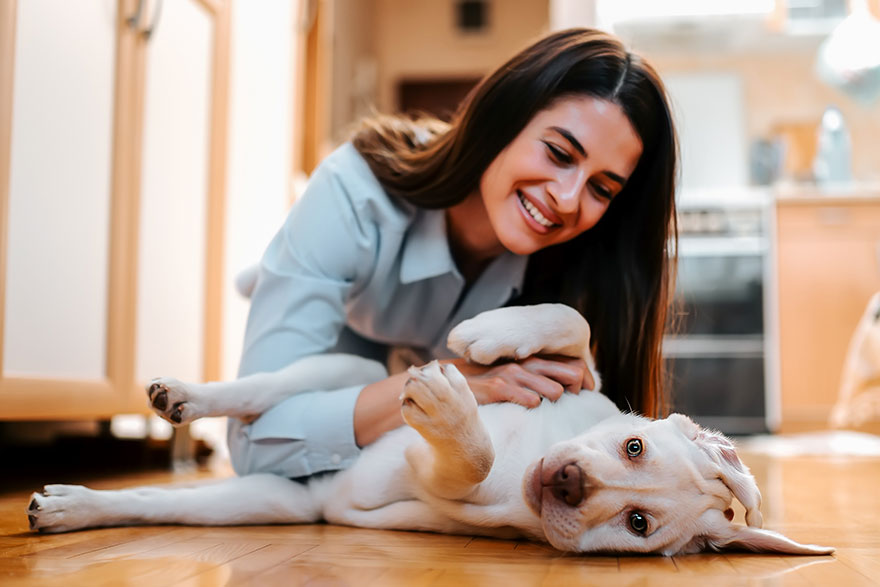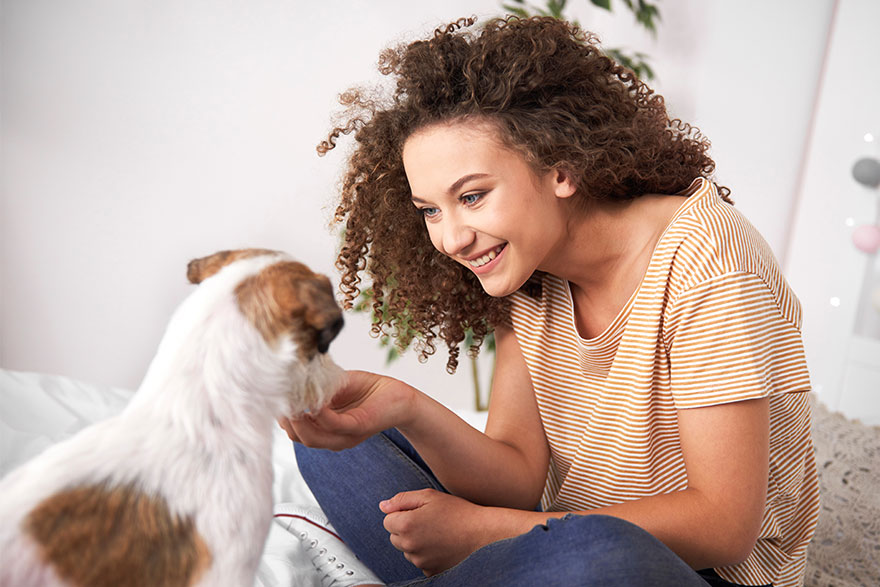
Good Command (Dog Training Command 18)
- Share
- Share
- Share
- Share
How to Teach Your Dog to Be Good Using The ‘Good Command’.
PetsBook is very passionate about fostering strong and loving bonds between pet owners and their canine or feline fur babies. To that extent, with regards to training we only support positive reinforcement dog training. In a previous article discussing this topic, we explained why using positive reinforcement techniques is an effective method for dog training and promotion of good behaviour.
Throughout the different dog training commands, we talk about ‘rewarding good behaviour’. Often, especially in the beginning phase while dogs are learning tasty ‘treats’ are offered up first, but then, straight after, it’s important to also give verbal praise such as ‘good boy/girl’ or a ‘good’ followed by your dog’s name, spoken enthusiastically. This encouragement will work a treat (pun intended).

Lastly, loving physical contact will be received with joy, such as a rewarding rubbing of their neck, to the base of their ears or side of the shoulder, especially in conjunction with verbal praises.
The takeaway point here is that rewards for good behaviour can and should come from your heart, not a packet. In fact, as you read through the different dog training commands, you’ll notice we suggest reducing the food treats as part of the reward, gradually weening your dog off of them, until the praise and physical affection is more than enough reward for your dog obeying your commands.
This obedience training article for dogs will teach you how to train your dog to repeat a behaviour using the ‘Good Command‘ as a reward, which forms part of the positive reinforcement training techniques adopted by PetsBook.
The term ‘Positive Reinforcement’ isn’t new. It was first coined by B.F Skinner last century and was commonly referred to as ‘Reward-based Training’, a theory first put forward in 1910 when it was discovered that animals will repeat a behaviour if they get rewarded.
In the beginning, wild dogs bravely approached human dwellings, receiving food scraps as reward for their bravery. This behaviour was rewarded time and time again, reinforcing that by coming to humans they would be fed, until eventually wild dogs became domesticated.

When training dogs different commands. ‘Positive reinforcement’ involves giving a reward when the correct behaviour is displayed. Dogs are encouraged to show the desired behaviour to be rewarded. As soon as the behaviour is shown, you ‘mark’ the event by saying a positive ‘Yes’, followed by handing over a tasty treat and praise with ‘Good Boy/Girl’ (the Good Command) as the reward. When your dog associates the action of doing what asked with a reward, they’ll be more likely to repeat the behaviour to see if he/she can get another reward.
The change in your dog’s behaviour can be put down to two things. They either learn to do something because they were rewarded for doing so, which is a positive consequence, or they learn to do something because not doing it results in an unpleasant or negative consequence.
Sadly, some dog training techniques focus on the unpleasant consequence. Fear in the form of aggression, noise, even pain in the case of shock or prong collars are used to force the dog to do what the trainer wants them to do.
Fortunately, though, there is much evidence that negative training methods, such as punishment, are indeed bad for a dog’s physical and mental health, as well as their overall wellbeing. We now know that negative training methods create fear, which inhibits learning, meaning these methods are actually less effective than using positive training methods.
Positive reinforcement dog training is effective when done with consistency and patience. It helps to build your dog’s confidence and allows them to know what is expected. Animals that are punished are often nervous and fearful and show more behavioural problems.
Your fur baby, by their very nature is ready and eager to please you, so by adopting positive training techniques, you’re also building a strong bond between you both. Another consequence is you’ll have more fun with your pet knowing they’re happy to be rewarded for their efforts following your instructions during the training process.
Yes, patience is required on your behalf, but by persisting, your dog will soon learn by following your direction he/she will get that tasy treat, praise and your undying love.
Summary of How To Teach Your Dog The ‘Good Command’
At the risk of being repetitive, consistency, practice and patience are the keys to dog training success. Any dog, young or old can be taught to perform some truly amazing tasks using positive, force-free training techniques.
Sometimes, figuring out why your dog isn’t picking up the correct behaviour can be difficult.
Pet Behaviourists may need to be engaged to basically unpick anxious or stressed dogs, sometimes seen with ‘rescue dogs’ that may have been exposed to negative training methods.
Some dogs that aren’t overly motivated by food treats (rare) will almost certainly take to cooked chicken pieces. However, I would strongly suggest finding a commercial option that works because apart from the expense, chicken is messy and doesn’t last very long out of a sealed container in the fridge.
Pet shops have many brands and flavours to choose from these days, and many are made with healthy natural ingredients. I would also suggest using and rotating several different types, so your dog doesn’t become used to just one.
The most important point with using treats as a reward for good behaviour is that they must be tempting enough tempt your dog to abandon the unwanted behaviour.
Having trouble, or have a question about getting your dog to accept praise including the ‘Good Boy/Girl Command’?
Leave a comment for ‘Bear’ below and he’ll be happy to answer it for you, especially if you get his attention by using his name.
We at PetsBook also recommend getting out with your dog and join a training course.
Pet Directory has many dog training clubs listed near you with experienced and accredited dog trainers, ready to help you with dog obedience and dog command training.
» List of Dog Training Commands

Hi, I’m Bear, the Training Manager at PetsBook. With over 20 years experience using positive reinforcement dog training techniques, I’m proud to have the opportunity to help you develop a stronger bond with your fur baby, by teaching you useful commands with obedience training.
- Cat Behaviour & Training 1
- Cat Care 1
- Cat Health 1
- Cats 3
- Dog Behaviour & Training 38
- Dog Care 1
- Dog Grooming 2
- Dog Health 1
- Dogs 42
After A Product or Service for Your Pet?
PetsBook's Pet Directory is the easy way to find everything you need to take care of your 'fur baby'.
ABN: 97 675 528 953






